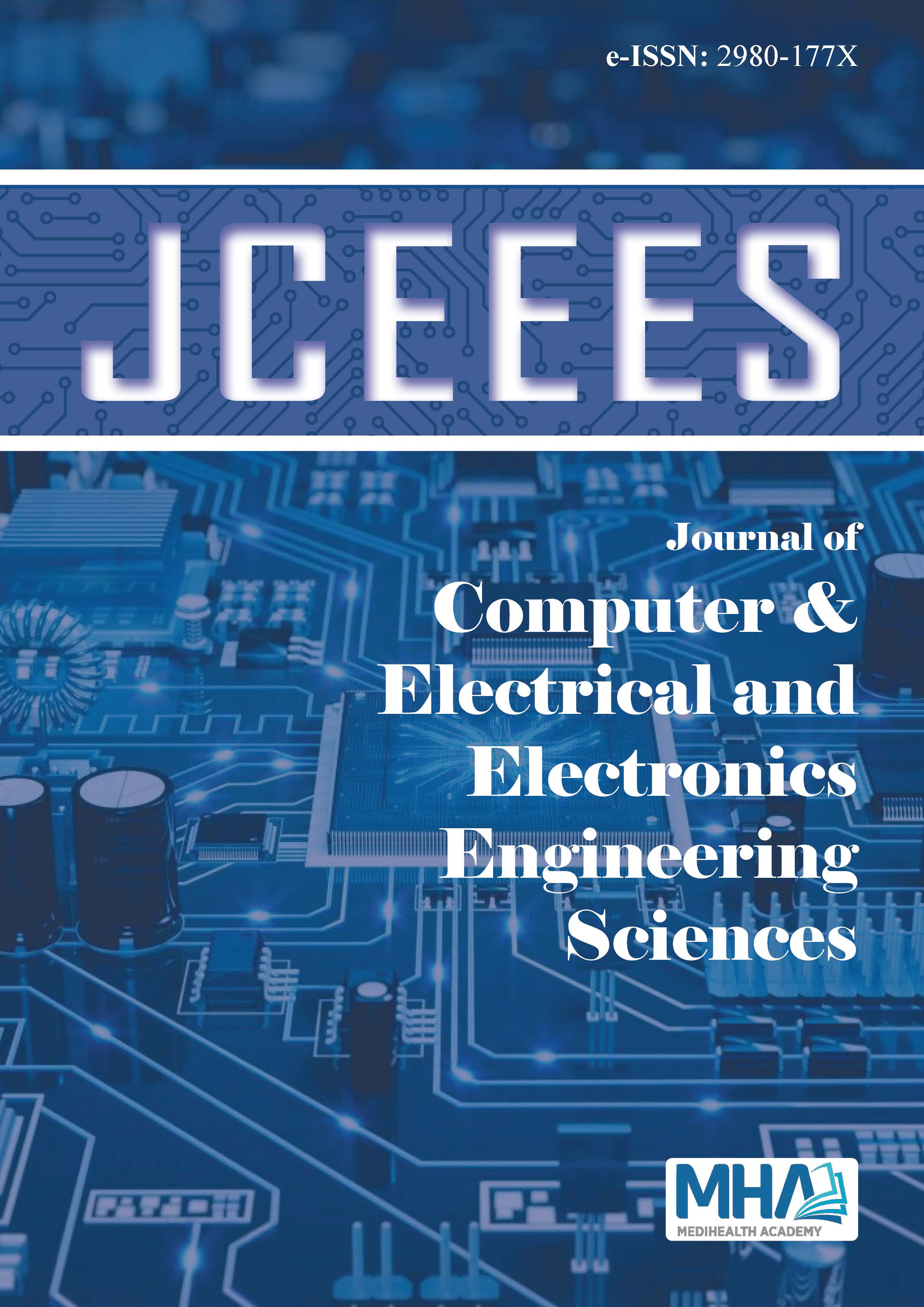1. Adil, E., Mikou, M., & Mouhsen, A. (2022). A novel algorithm fordistance measurement using stereo camera. CAAI Transact IntelligenceTechnol, 7(2), 177-186. doi: 10.1049/cit2.12098
2. ???????, ?. ?., & ????????????, ?. ?. Development of systemfor distance measuring using stereo image.International Journal ofInformation and Communication Technologies,1(1), 406883., doi:10.54309/ijict.2020.1.1.048
3. Badki, A., Troccoli, A., Kim, K., Kautz, J., Sen, P., & Gallo, O. (2020).Bi3D: Stereo depth estimation via binary classifications. In Proceedingsof the IEEECVF Conference on Computer Vision and PatternRecognition (CVPR) (pp. 1600-1608).
4. Bai, L., Zhao, T., & Xiu, X. (2022). Exploration of computer vision andimage processing technology based on OpenCV. In2022 InternationalSeminar on Computer Science and Engineering Technology (SCSET)(pp.145-147). IEEE. doi: 10.1109/scset55041.2022.00042
5. Bandi, A. K., Nangunuri, L., Gujjeri, S., & Anoopama, K. (2023).Advance Intelligent Video Surveillance System Using OpenCV.International Research Journal of Engineering and Technology(IRJET), 9(12). Retrieved from https://www.irjet.net
6. Boz, U. C., & Sancaktar, İ. (2023). Stereo görüntüleme ile araçların şasieğriliklerinin tespiti. Düzce Üniv Bil Tekn Derg, 11(2), 625-637. doi:10.29130/dubited.1059019
7. Chandan, G., Jain, A., & Jain, H. (2018). Real time object detectionand tracking using Deep Learning and OpenCV. In2018 InternationalConference on inventive research in computing applications(ICIRCA)(pp. 1305-1308). IEEE., doi: 10.1109/ICIRCA.2018.8597266
8. Charles, R.A.P., Patil, A.V. (2021). Depth estimation using blob detectionfor stereo vision images. ict analysis and applications. Proceedings ofICT4SD 2020, 2, 213-222 doi: 10.1007/978-981-15-8354-4_22
9. Dardagan, N., Brdanin, A., Dzigal, D., & Akagic, A. (2021). Multipleobject trackers in opencv: a benchmark. In2021 IEEE 30th internationalsymposium on industrial electronics (ISIE)(pp. 1-6). IEEE. doi: 10.1109/ISIE45552.2021.9576367
10. Dewedar, M. A., Kamel, A. M., Hassan, M. A., & Elhalwagy, Y. Z. (2022).Real-time arial targets tracking for anti-UAV systems using OpenCV.In2022 13th International Conference on Electrical Engineering(ICEENG)(pp. 1-4). IEEE. doi: 10.1109/ICEENG49683.2022.9781864
11. Erazo, A., Tayupanta, E., & Ko, S. B. Epipolar Geometry on DronesCameras for Swarm Robotics Applications. 2020 IEEE InternationalSymposium on Circuits and Systems (ISCAS), 2020, pp. 1-5, doi: 10.1109/ISCAS45731.2020.9180981
12. Fan, R. (2020). Computer Stereo Vision for Autonomous Car Perception:Hardware and Software Aspects. arXiv preprint arXiv:2012.03194.
13. Haggui, O., Tchalim, M. A., & Magnier, B. (2021). A comparisonof opencv algorithms for human tracking with a movingperspective camera. In2021 9th European Workshop on VisualInformation Processing (EUVIP)(pp. 1-6). IEEE. doi: 10.1109/EUVIP50544.2021.9483957
14. Khare, S., Singh, M., Kaushik, B. K., & Chandra, K. (2021). ImageProcessing Technique for Field of View Measurement of Electro-Optical Imaging System. InICOL-2019: Proceedings of the InternationalConference on Optics and Electro-Optics, Dehradun, India(pp. 369-372). Springer Singapore. doi: 10.1007/978-981-15-9259-1_84
15. Laga, H., Jospin, L. V., Boussaid, F., & Bennamoun, M. (2020). A surveyon deep learning techniques for stereo-based depth estimation.IEEETransactions on Pattern Analysis and Machine Intelligence,44(4), 1738-1764. doi: 10.1109/TPAMI.2020.3032602
16. Lin, H. Y., & Tsai, C. L. (2021). Depth measurement based on stereo visionwith integrated camera rotation.IEEE Transactions on Instrumentationand Measurement,70, 1-10. doi: 10.1109/TIM.2021.3073687
17. Liu, Y. (2023). Moving object detection and distance calculation basedon OpenCV. InSecond Guangdong-Hong Kong-Macao Greater Bay AreaArtificial Intelligence and Big Data Forum (AIBDF 2022)(Vol. 12593, pp.391-395). SPIE. doi: 10.1117/12.2672207
18. Long, X., Liu, L., Li, W., Theobalt, C., & Wang, W. (2021). Multi-view depth estimation using epipolar spatio-temporal networks.InProceedings of the IEEE/CVF Conference on Computer Vision andPattern Recognition(pp. 8258-8267). (pp. 8258-8267).
19. Mangawati A., Mohana, Leesan M. & Aradhya H. V. R., “Object TrackingAlgorithms for Video Surveillance Applications,”2018 InternationalConference on Communication and Signal Processing (ICCSP), Chennai,India, 2018, pp. 0667-0671, doi: 10.1109/ICCSP.2018.8524260
20. Meng, Z., Kong, X., Meng, L., & Tomiyama, H. (2021). Stereo vision-based depth estimation. InAdvances in Artificial Intelligence and DataEngineering: Select Proceedings of AIDE 2019(pp. 1209-1216). SpringerSingapore. doi: 10.1007/978-981-15-3514-7_90
21. Njuguna, J. C., Alabay, E., Çelebi, A., Çelebi, A. T., & Güllü, M.K. (2022, May). Efficient Hardware Implementation of Real-TimeObject Tracking. In2022 30th Signal Processing and CommunicationsApplications Conference (SIU)(pp. 1-4). IEEE. doi: 10.1109/SIU55565.2022.9864768
22. Poggi, M., Tosi, F., Batsos, K., Mordohai, P., & Mattoccia, S. (2021).On the synergies between machine learning and binocular stereo fordepth estimation from images: a survey.IEEE Transactions on PatternAnalysis and Machine Intelligence,44(9), 5314-5334. doi: 10.1109/TPAMI.2021.3070917
23. Raghunandan, A., Raghav, P., & Aradhya, H. R. (2018). Object detectionalgorithms for video surveillance applications. In2018 InternationalConference on Communication and Signal Processing (ICCSP)(pp.0563-0568). IEEE. doi: 10.1109/ICCSP.2018.8524461
24. Ristanto, S., Nugroho, W., Sulistya, E., & Suparta, G. B. (2021). Systemand method for stereoscopic image acquisition. InAIP ConferenceProceedings(Vol. 2374, No. 1). AIP Publishing. doi: 10.1063/5.0058929
25. Su, J., Wu, C., & Yang, S. (2023). Object-tracking algorithm combiningmotion direction and time series.Applied Sciences,13(8), 4835. doi:10.3390/app13084835
26. Sun, X., Jiang, Y., Ji, Y., et al. (2019). Distance measurement systembased on binocular stereo vision. InIOP Conference Series: Earth andEnvironmental Science(Vol. 252, No. 5, p. 052051). IOP Publishing. doi:10.1088/1755-1315/252/5/052051
27. Wacey, A. (2021).U.S. Patent No. 11,064,100. Washington, DC: U.S.Patent and Trademark Office.
28. Wang, X., Tao, C., Wu, R., et al. (2020). Light-field-depth-estimationnetwork based on epipolar geometry and image segmentation.JOSAA,37(7), 1236-1243.
29. Yanık, H., & Turan, B. (2022). Görüntü-Metre ile görüntü işleme tabanlımesafe ölçümü. Gazi Üniversitesi Mühendislik Mimarlık FakültesiDergisi, 38(2), 1129-1140. doi: 10.17341/gazimmfd.979121
30. Zaarane, A., Slimani, I., Al Okaishi, W., Atouf, I., & Hamdoun, A.(2020). Distance measurement system for autonomous vehicles usingstereo camera. Array, 5, 100016. doi: 10.1016/j.array.2020.100016

